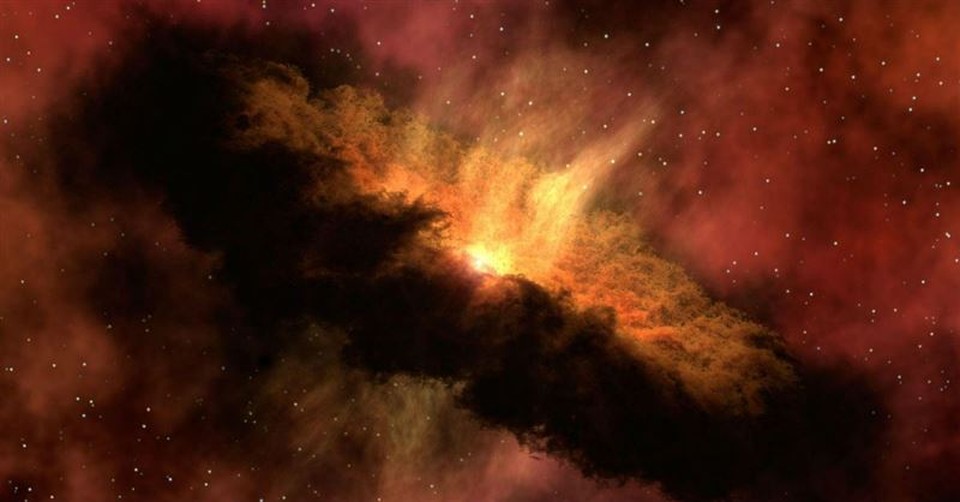Does the Sky Hold Signs of the End Times?

This month, astronomers can see something unusual in the sky: the planets Mars, Venus, Jupiter, and Saturn are aligning. They first become visibly aligned on Tuesday, April 19, 2022, where you could see them in a diagonal line. If you live in the northern hemisphere, you will be able to see them before dawn in the southeastern region of the sky. The planets’ alignment will be especially close on Friday, April 22, 2022. The following week, the moon will look like it’s traveling in between the planets, and by the end of April, Venus and Jupiter will seem so close together they’ll look like they’re in danger of colliding.
Many Christians are wondering whether this alignment has supernatural importance. Are these planets’ movements connected to the signs and wonders of the End Times?
Here is what you should know about the Bible’s stance on astronomy.
Does Astronomy Appear in the Bible?
Astronomy—studying the night sky, noting patterns in it—has been around for millennia, going back to the Biblical period. Consequently, the Bible mentions stars on many occasions, sometimes attaching importance to them. Most famously, the Magi (possibly astrologers, possibly kings) follow a star to bring Jesus’ gifts.
As the International Standard Bible Encyclopedia explains, the Bible uses astronomy details in many ways. Sometimes astronomy imagery is used to describe God. “The sun of righteousness will rise with healing in its rays” (Malachi 4:2 NIV). He holds the Pleiades constellation in his hands and binds the cords of Orion (Job 38:31). Planetary movements help the Hebrews plan their calendar, particularly the year of Jubilee. Sometimes, the Bible mentions stars falling from the sky like figs (Isaiah 34:4, Revelation 6:13), which could refer to meteor showers.
While the Bible mentions stars, constellations, and other “heavenly bodies,” it doesn’t claim that we can predict the future by looking at the stars. It sharply warns against using Zodiac signs or stars to divine the future or someone’s fate. The prophet Isaiah mocks leaders who rely on astrologers for counsel (Isaiah 47:13-14). Multiple Old Testament books warn not to dabble in divination or other forms of fortune-telling (Leviticus 19:26, Leviticus 20:6, Deuteronomy 18:10-11, 1 Samuel 15:23).
Where Does Revelation Mention Astronomy?
Revelation has several references to stars, planets, or other heavenly objects. Among others, Revelation mentions:
- A man appears to John, holding seven stars in his hand (Revelation 1)
- A “wormwood star” falls from the heavens (Revelation 8:11).
- Giving someone a morning star (Revelation 2:26)
- The sun turning black and the moon red (Revelation 6:12)
- “Something like a huge mountain, all ablaze, was thrown into the sea” (Revelation 8:8)
- “A great star, blazing like a torch, fell from the sky on a third of the rivers and on the springs of water— the name of the star is Wormwood.” (Revelation 8:10-11)
- The new heaven and new earth (Revelation 21:1)
- Jesus, the bright morning star (Revelation 22:16)
Some Christians see these references as predictions of astronomical phenomena in the End Times. For example, the wormwood star and the great mountain landing in the sea could be meteors hitting the earth’s surface. The sun turning black and the moon red could be a solar eclipse and a lunar eclipse (in many lunar eclipses, like the one that occurred in 2020, the moon looks red).
However, others argue that Revelation’s language makes it hard to say when these references refer to something that will literally happen. For example, Revelation 9:1-2 says, “I saw a star that had fallen from the sky to the earth. The star was given the key to the shaft of the Abyss. When he opened the Abyss, smoke rose from it like the smoke from a gigantic furnace.” The star is described in an anthropomorphic way (given human qualities: having human hands and arms to take a key and turn it to unlock the Abyss). Does this mean God will direct the star to hit the earth in a way that opens the shaft of the Abyss? Is the star a person who will get permission to unleash something from the Abyss? Given that Jesus calls himself “the bright morning star” (Revelation 22:16), either option is possible.
Others have noted that John’s visions in Revelation don’t seem to all be about the future. This came up in September 2017, when multiple Christians observed Mercury, Venus, Mars, and Jupiter appearing together in the constellation Virgo, with Jupiter moving out of Virgo. They interpreted Jupiter exiting Virgo as the mother giving birth to a son mentioned in this passage:
A great sign appeared in heaven: a woman clothed with the sun, with the moon under her feet and a crown of twelve stars on her head. She was pregnant and cried out in pain as she was about to give birth. Then another sign appeared in heaven: an enormous red dragon with seven heads and ten horns and seven crowns on its heads. Its tail swept a third of the stars out of the sky and flung them to the earth. The dragon stood in front of the woman who was about to give birth, so that it might devour her child the moment he was born. She gave birth to a son, a male child, who “will rule all the nations with an iron scepter.” And her child was snatched up to God and to his throne. (Revelation 12:3-5 NIV)
In other words, Jupiter was the son, Virgo the mother, as the great sign appeared in the heavens. However, there are flaws in this argument. First, as Christopher M. Graney observed in The Catholic Astronomer, the interpretation assumed this arrangement had never happened before. Research showed the same arrangement had occurred four times between 1017 and 2017 alone.
Furthermore, this Revelation 12 passage leads into a “war in heaven,” where the angel Michael fights the dragon and “the great dragon was hurled down—that ancient serpent called the devil, or Satan, who leads the whole world astray. He was hurled to the earth, and his angels with him” (Revelation 12:9 NIV). As a result, this passage is often interpreted as describing something that predates Genesis 1:1 before moving forward to the New Testament’s key event. The war in heaven is taken to be a literal war that Satan fought against God, a third of the angels joining him. After the war ended with God victorious, Satan “fell like lightning from heaven” (Luke 10:18 NIV), his rebels following him. John Milton’s Paradise Lost picks up after this event, with Satan rallying his followers in their new home.
Following this interpretation, the son is not a planet but Jesus, who defeats the great dragon. The mother represents Israel, which experiences many trials (exiles, invasion by Rome, the 400 years of silence) before birthing the Messiah.
What is the Correct Interpretation of Astronomy in Revelation?
Christians’ interpretations of Revelation’s astronomy reference will vary depending on what denomination or tradition they follow. Christians who see Revelation as an essentially literal description of the End Times will see these astronomical references as descriptions of coming signs in the heavens. Christians who see Revelation as a description of the early church’s experiences may see these references as allegorical or coded references to Nero, Rome, etc.
Different views of the millennium (1,000 years of suffering before Christ returns) also affect how Christians interpret these details. For a good summary of Christian positions on the millennium, read the following Christianity.com articles:
Regardless of what view Christians take on Revelation and the End Times, the fact remains that the Bible affirms humans cannot know when the End Times will come. Jesus stated, “But about that day or hour no one knows, not even the angels in heaven, nor the Son, but only the Father” (Matthew 24:36 NIV), a statement also recorded in Mark 13:32. Instead of worrying and vainly predicting when the end would become, Jesus told his followers always to be ready because “the Son of Man will come at an hour when you do not expect him.” (Matthew 24:44 NIV).
Photo Credit: Pexels/Pixabay

This article is part of our larger resource library of Christian questions important to the Christian faith. From core beliefs to what the Bible says about angels, we want to provide easy to read and understand articles that answer your questions about Christian living.
What Do Christians Believe?
Is Gambling a Sin?
Is Drinking Alcohol a Sin?
What Does God Look Like?
Are Guardian Angels Real?
What is Heaven Like?
Originally published April 21, 2022.





